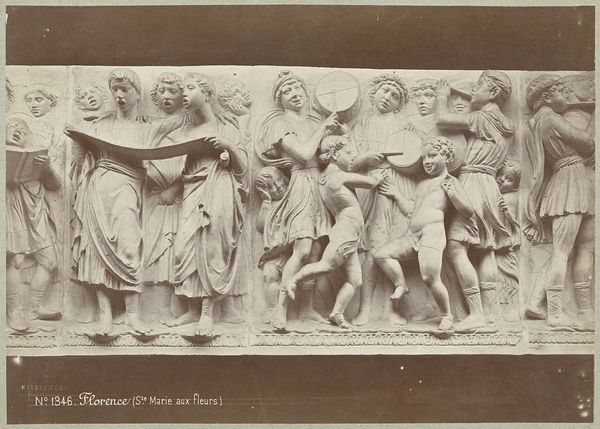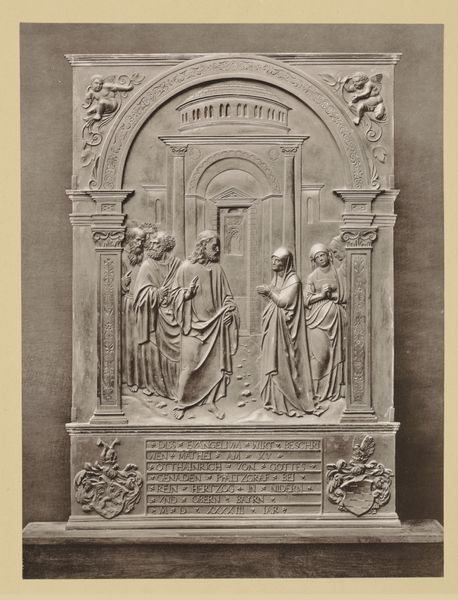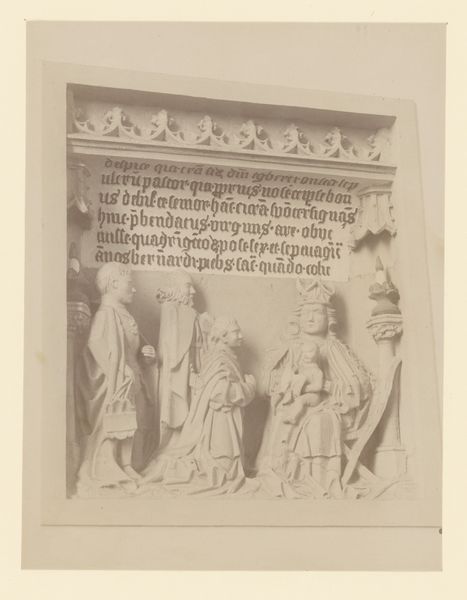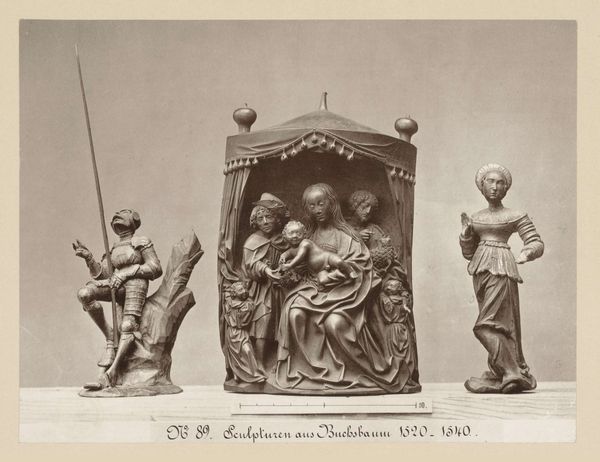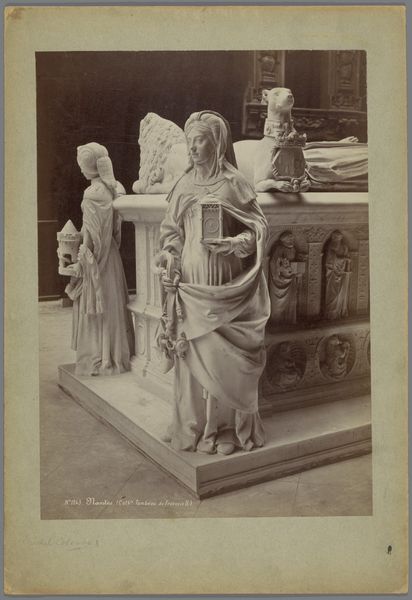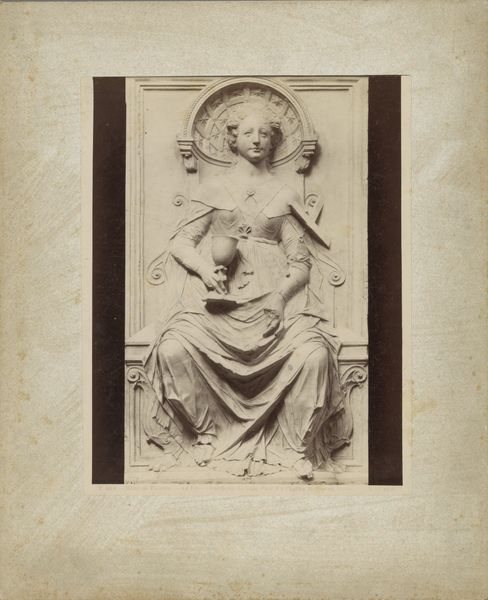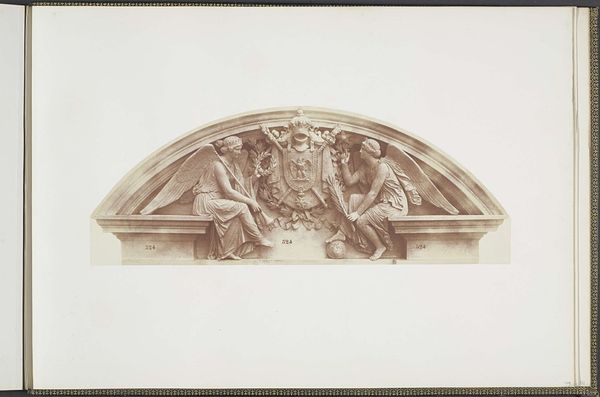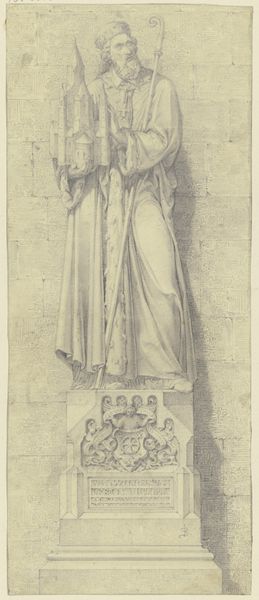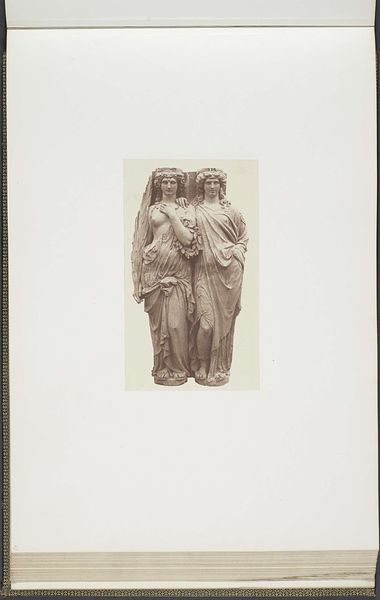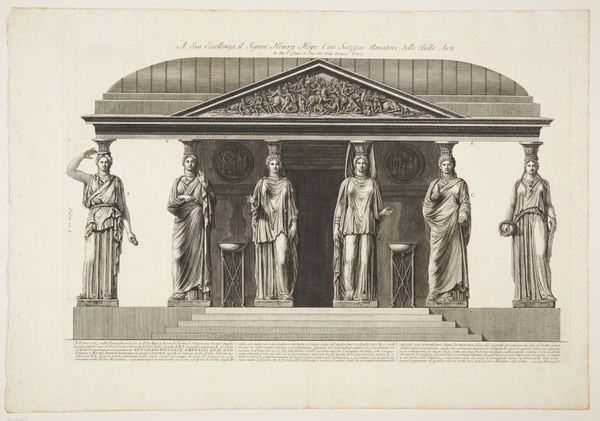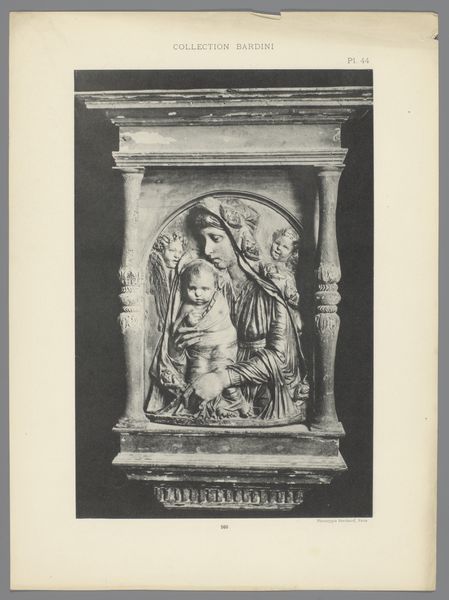
relief, sculpture, wood
#
medieval
#
narrative-art
#
relief
#
figuration
#
sculpture
#
group-portraits
#
19th century
#
wood
#
portrait drawing
#
history-painting
#
statue
Dimensions: height 224 mm, width 195 mm, height 439 mm, width 340 mm
Copyright: Rijks Museum: Open Domain
Editor: We're looking at "Relief of the Death of Mary," an anonymous sculpture dating from 1869 to 1887, currently housed at the Rijksmuseum. Carved from wood, it presents a poignant scene with many figures gathered around a central bed. What strikes me most is the somber gravity of the piece. What historical context informs its emotional impact? Curator: The late 19th century saw a surge in historicism, and this piece reflects a fascination with medieval artistic styles and religious themes. It's interesting to consider how the relief form itself, traditionally used to adorn religious buildings, imbues the scene with a sense of public ritual and shared mourning. How do you see the arrangement of the figures contributing to that feeling of public display? Editor: The gathering around Mary feels like a community's shared grief, staged almost. There’s a performative aspect, maybe meant to inspire similar emotions in viewers. I'm curious about who was commissioning art like this at the time. Curator: Precisely. Remember the 19th century was an age of growing nationalism and religious revivalism. Patrons – often wealthy individuals or religious orders – sought to promote specific values and strengthen social bonds through art that evoked a shared past. Think about the rise of museums during this period as well – places that solidify and display a certain kind of historical narrative. How might this relief function differently inside and outside a museum setting? Editor: That makes sense. Inside a museum, it's preserved as art history; outside, perhaps in a church, it has more of a living, devotional role. I never thought about how much the museum environment itself affects how we view such pieces. Curator: Exactly. The Rijksmuseum setting gives it an added layer of meaning that maybe was never meant for. I’ve always loved looking at art with fresh eyes! Editor: Me too. Thanks for shedding light on the social dimensions; it's broadened my appreciation for this powerful relief.
Comments
No comments
Be the first to comment and join the conversation on the ultimate creative platform.
